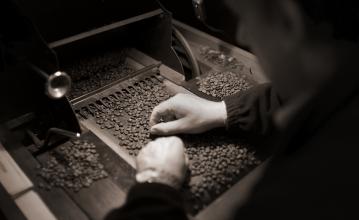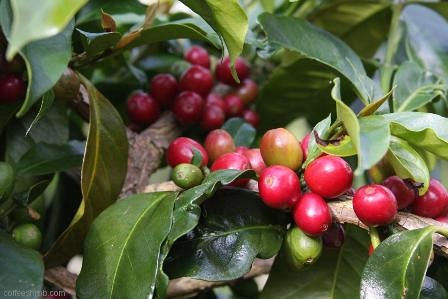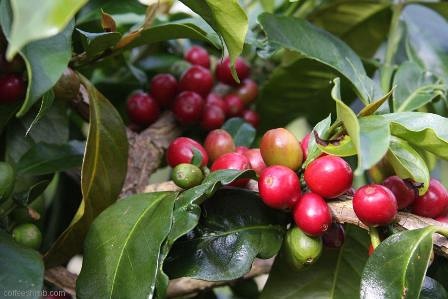Characteristics of Iron pickup and bourbon varieties and treatment of Tarazhu Coffee beans in Costa Rica
Coffee bean species worldwide are mainly divided into: Arabica and Robestar (Canephora), of which Arabica coffee beans account for about 70%-80% coffee. There are more than 100 coffee varieties. The more common coffee is Arabica, which has outstanding personality and unique flavor. It is the main force of fine coffee, mainly used for coffee shop operation and high-end coffee market supply. Robusta, coarse flavor, high caffeine content, not a specialty coffee, often used in instant coffee processing and espresso blends.
Ethiopia Typica (iron pickup) and Yemen Bourbon (bourbon) are the oldest coffee varieties known so far. They have been transplanted from their original places to Central and South America and Asia to derive many Arabica variants. Arabica coffee cultivated in Yunnan Province of China belongs to one of Typica variants, and Bourbon variants exist in other regions.
Iron pickup "Typica" iron pickup, the name sounds very majestic, but in fact it is not so strong... its constitution is weak, disease resistance is poor, easy to catch rust leaf disease, fruit yield is also small. It is one of Ethiopia's oldest native varieties, and many Arabica are derived from iron pickups!
Iron pickup top leaves for bronze is one of the characteristics, bean larger, into a sharp oval or thin pointed shape. We are familiar with, such as thunder, such as Mantenin, Blue Mountain, Elephant Bean, Kona, Yunnan Small Round Bean... and so on. They are all derivatives of iron pickups.
Bourbon Bourbon is an ancient fine variety that is juxtaposed with iron pickups, and some botanists believe that Bourbon is a variant of early iron pickups transplanted to Yemen.
Country: Costa Rica Fiscal year: 2003
Grade: SHB
Production area: Tara Pearl
Producer: Tarazhu Local Smallholder
Treatment method: washing
Breeds: Kadura, Kaduai
Manor: Diamond Hill Manor
Flavor: Soft orange notes, toast, caramel cocoa sweet, clean taste
Coffee cultivation in Costa Rica was introduced from Cuba in 1779 and exported for the first time in 1820. There are about 32,000 coffee farmers in Costa Rica, with an average cultivation area of less than one hectare (10,000 m2) per farmer. Costa Rica has a population of 4.1 million (2006), 82,500 hectares of coffee cultivation area, an annual production of 1.7 million bags (60kgs per bag), and an annual domestic consumption of 380,000 bags, with an average annual consumption of 5.5 kgs per person, which is higher than Japan (consumption of 4 kgs). Costa Rica is the first country to introduce coffee into Central America. It has a long history and a complete coffee organization system from production to sales. Because it is located in the Central American Strait, there are many volcanoes in the territory, it has the natural advantages of sunshine and land, and the climate is coordinated by the Pacific Ocean and Atlantic Ocean currents and sea breezes at the same time. The coffee produced has the characteristics of local micro-climate and terroir conditions. In terms of quality and quantity, Costa Rica's coffee has always been recognized by the world and has been rated as one of the world's high-quality coffees. Costa Rican coffee has been cultivated for 200 years, first planted in Poas and Barva volcanic slopes, today known as the Central Valley (Central Valley), the main seven coffee producing areas from northwest to southeast, along the central plateau and distribution. Fertile volcanic ash, mild temperatures, and steady rainfall are all factors that make coffee a staple crop in Colombia. The seven regions are Tarrzu, Tres Rios, Orosi, Central Valley, West Valley, Turrialba and Brunca.

Important Notice :
前街咖啡 FrontStreet Coffee has moved to new addredd:
FrontStreet Coffee Address: 315,Donghua East Road,GuangZhou
Tel:020 38364473
- Prev

Is the washing of Tarazu Diamond Villa Garden in Costa Rica Robusta or Arabica?
Global coffee bean tree species are mainly divided into: Arabica and Canephora, of which Arabica coffee beans account for more than 100 coffee varieties of 70%80%coffee. The more common coffee varieties are: Arabica Arabica, with outstanding personality and unique flavor, is the main force of boutique coffee, mainly used in coffee shop management and high-end coffee market supply; Robsta
- Next

Is the Guatemalan coffee bean roasted Ladisha Manor Robusta or Arabica? Coffee
Global coffee bean tree species are mainly divided into: Arabica and Canephora, of which Arabica coffee beans account for more than 100 coffee varieties of 70%80%coffee. The more common coffee varieties are: Arabica Arabica, with outstanding personality and unique flavor, is the main force of boutique coffee, mainly used in coffee shop management and high-end coffee market supply; Robsta
Related
- Detailed explanation of Jadeite planting Land in Panamanian Jadeite Manor introduction to the grading system of Jadeite competitive bidding, Red bid, Green bid and Rose Summer
- Story of Coffee planting in Brenka region of Costa Rica Stonehenge Manor anaerobic heavy honey treatment of flavor mouth
- What's on the barrel of Blue Mountain Coffee beans?
- Can American coffee also pull flowers? How to use hot American style to pull out a good-looking pattern?
- Can you make a cold extract with coffee beans? What is the right proportion for cold-extracted coffee formula?
- Indonesian PWN Gold Mandrine Coffee Origin Features Flavor How to Chong? Mandolin coffee is American.
- A brief introduction to the flavor characteristics of Brazilian yellow bourbon coffee beans
- What is the effect of different water quality on the flavor of cold-extracted coffee? What kind of water is best for brewing coffee?
- Why do you think of Rose Summer whenever you mention Panamanian coffee?
- Introduction to the characteristics of authentic blue mountain coffee bean producing areas? What is the CIB Coffee Authority in Jamaica?

